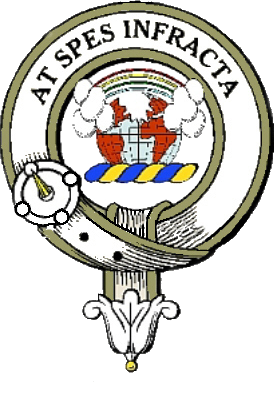

The “Hope” surname originated as a place / location name associated with Scotland, England, and Norway.
Surnames only came into common use after about 1100 AD. Prior to then, people had only one name but as the population increased, it became awkward to try to distinguish between all the Johns, James, Williams, etc. in a localized area. People began to be differentiated by their given name and some other characteristic feature. There were four main characteristics that tended to distinguish among individuals: their occupation, their location, their father's name, and, finally, some identifiable feature or characteristic of the individual. Location surnames were originally preceded by a preposition such as “la”, "de", "atte", "by" or "in", denoting a relationship to the identifying feature. In many parts of central and western Europe, hereditary surnames began to become fixed during, roughly, the 1100s, and have developed and changed slowly over the years. As society became more complex, such matters as land ownership and collection of taxes became more prominent, it became imperative to develop a more complex system to differentiate among individuals having the same given name. In the Middle Ages heraldry came into use as a practical matter. It originated in the devices used to distinguish the armored warriors in tournament and war, and was also placed on seals as marks of identity. As far as records show, true heraldry began in the middle of the 12th century, and appeared almost simultaneously in several countries of Western Europe.
The Hope surname is most often a habitation, place or location name, 'the dweller at the hope' meaning ‘resident between two hills’. In some of the older Celtic languages, a hope, (originally hop or hob), referred to a valley, hollow or other piece of land between, or enclosed by, hills or mountains. In some Scandinavian languages, it referred to a fjord, lake or other land locked body of water. Additionally, it may come from the anglicization of names from other languages which either sound like, or mean, “Hope”. The French surname, l’Esperance (from the three virtues), literally translated as Hope, became Hope in some cultures. Others such as Hoip, Hop, Hoep, Hoop, Hoppe, Haupt, etc. were also anglicized into Hope. The surname was reportedly taken to Ireland by settlers and, since the 14th century, has been traditionally associated with Westmeath, although now widely scattered. In any case, the Hope surname is known to be present in Scotland as early as the thirteenth century. The Scottish Gaelic spelling is “Hob”; middle English was Hop(e) and old Norse was Hop
Hope, Johan (del counte de Pebbles) Signed the Ragman Rolls in 1296. The name of modern Peebles is believed to be derived from "Pebyl" (a place to pitch tents) and in the ancient Celtic, refers to a camping area of the nomadic Gadeni tribe. One can assume that "Pebbles" was probably an intermediate stage in the translation from "Pebyl" to the modern Peebles. Many others signing the Ragman Rolls were from shires in the modern Scottish Borders where modern Peebleshire is located. Hopes were already extant in England around the same time. Roger le Hope is mentioned in early records in 1273 as residing in County Hereford. The Poll Tax of 1379 listed Alicia de Hope in Yorkshire. In the year of 1590, Fulk Hope married Elizabeth Hopkyn in London.
A.J.B. Hope (http://www.ajbhope.net/hope-surname) believes that there were two distinct groups of Hopes in early Scotland. One group, possibly that of which Johan Hope above was an early member, is associated with the borders region. This group of Hopes is identifiable and is currently extant in Scotland as well as the United States.
A.J.B. Hope (http://www.ajbhope.net/hope-surname) believes that there were two distinct groups of Hopes in early Scotland. One group, possibly that of which Johan Hope above was an early member, is associated with the borders region. This group of Hopes is identifiable and is currently extant in Scotland as well as the United States.
The other is the Edinburgh Hopes, There are two purported origins of the Edinburgh Hopes. John de Hope who came from France as a part of the retinue of Mary (Magdelena?) of Guise (French) to marry James V, king of Scotland is credited by some as the progenitor of the Hopes. However, there was another John Hope, shown in the Edinburgh Burgess Rolls of 1516-1517 with the alias Petit Johnne, Trumpetour who predated John de Hope. One of these John Hopes produced a grandson or great grandson, Sir Thomas Hope, who was a self taught lawyer and became Lord Advocate to Charles I. Sir Thomas gave rise to the two primary lines of the Edinburgh Hope family, his eldest son produced the Hopes of Craighall, with the title, Baronet of Craighall, while the youngest gave rise to the Hopes of Hopetoun, Earl of Hopetoun and Marquess of Linlithgow. The title, Earl of Hopetoun, is said to have been granted to the 1st Earl, Charles in 1703, in recognition of his father's heroism in giving up his place in a lifeboat to the Duke of York during a shipwreck and dying as a result. Both of these Hope lines are extant in the United Kingdom.
Because of its origin as a place name or translation of foreign names, there are many independent Hope lines. The Hope DNA Surname Project has identified over 20 different lines, mostly in the United States. One line has members in the USA, Canada, Australia, the UK and France. Clan Hope has a genealogist, Richard Hope, who specializes in Hope genealogies. If you want to trace your Hope lineage, we suggest you contact Richard or look into the Hope surname DNA Project.